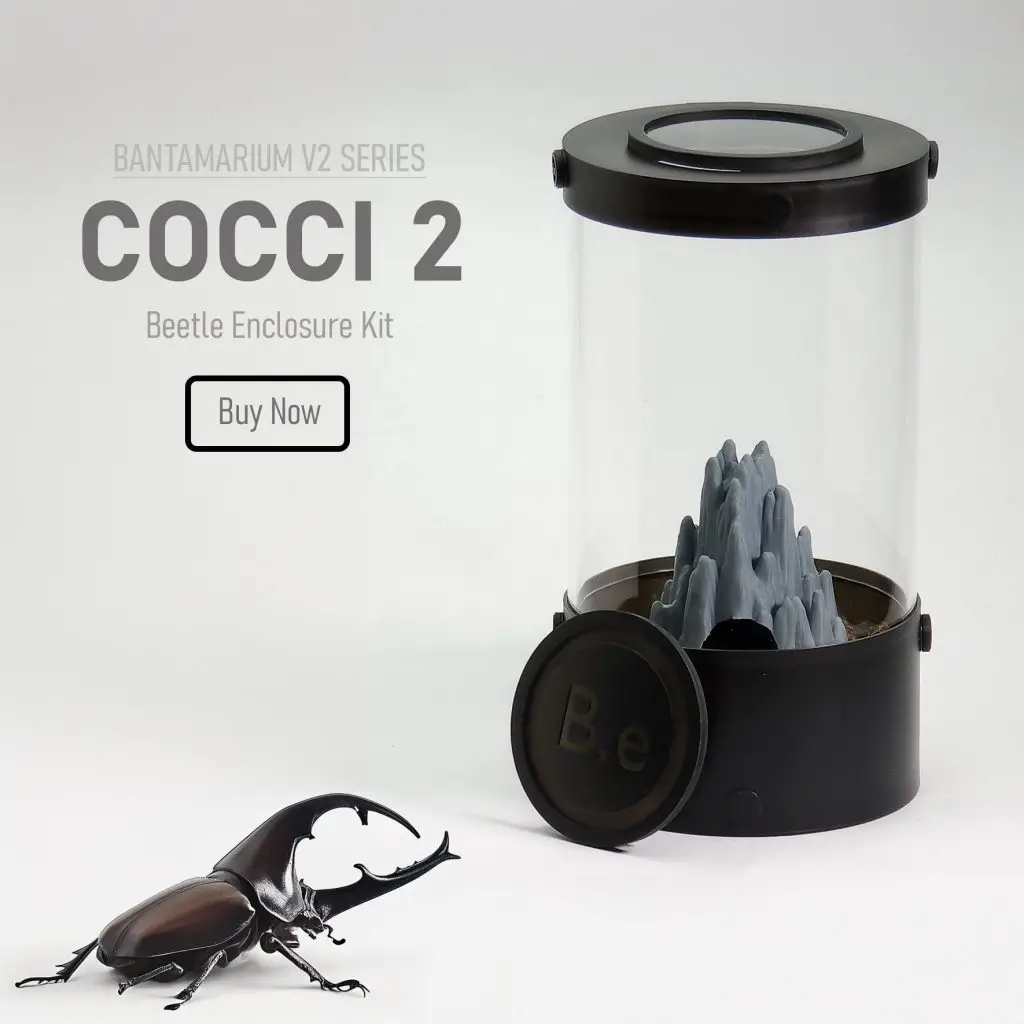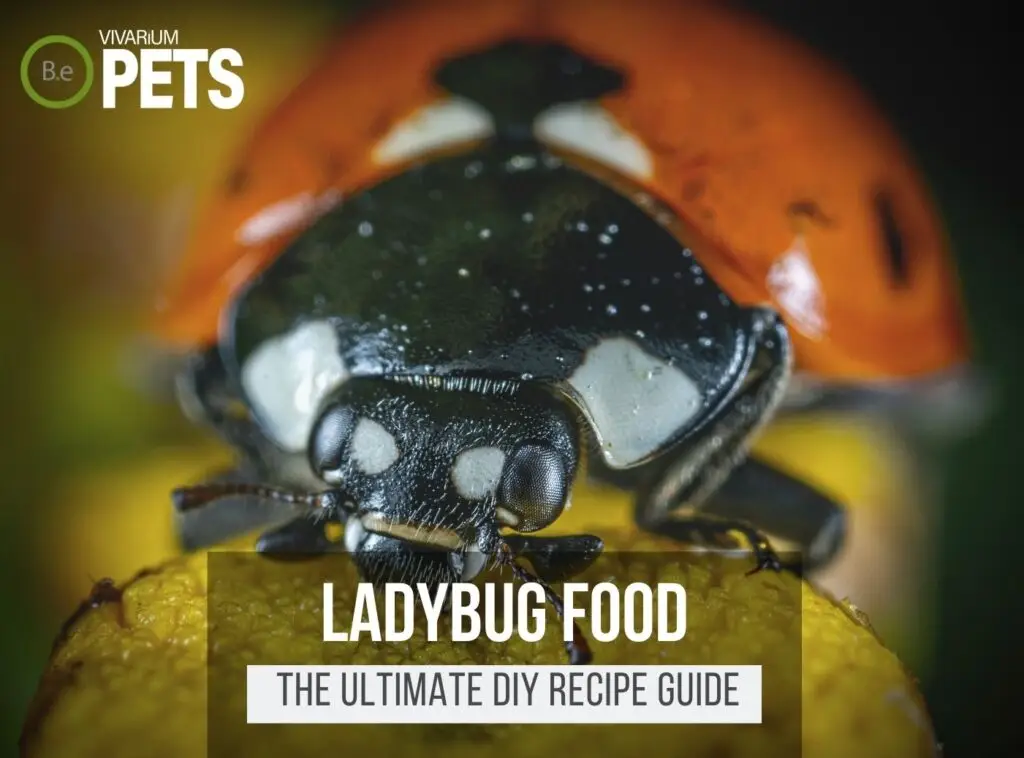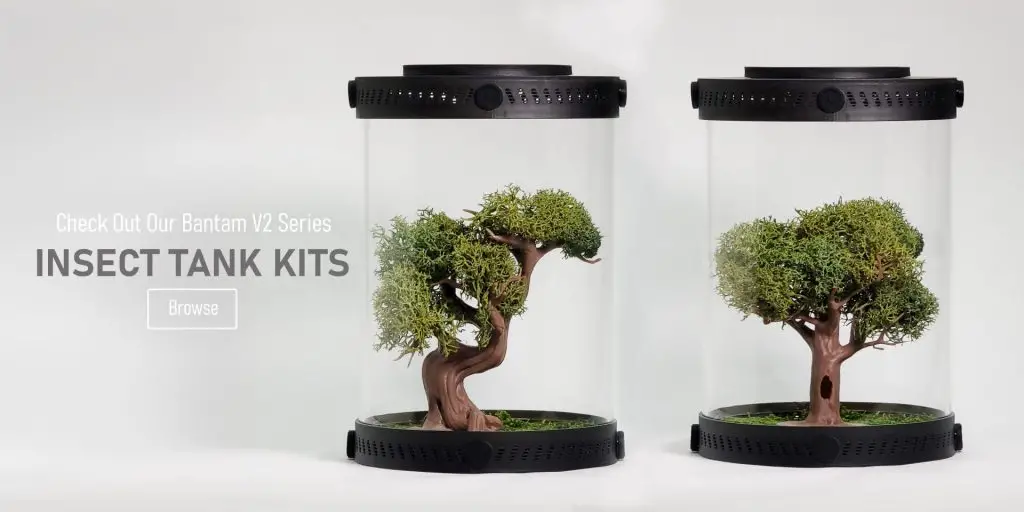Are you looking for an interesting and beautiful insect to add to your collection?
Consider the Twice-Stabbed Ladybug, an eye-catching species known for its vibrant orange and black hue and distinct double-pointed markings.
In this comprehensive guide, we’ll explore the habitat and care requirements of Chilocorus stigma, how to properly set up a tank for them, and the best options for ensuring the health and well-being of your lady beetles.
So, read on to find out how to become a successful caretaker for this type of ladybug!
Table Of Contents:
ToggleWhat Are Twice Stabbed Ladybugs?
Chilocorus stigma belongs to the family Coccinellidae and is otherwise known as the Twice-Stabbed Ladybug.
They are typically identified by their unique black-and-orange bodies which feature a striking double-pointed pattern, a trait which inspired their common name.
These ladybugs inhabit various parts of North America and feed on a variety of small pests.
With their attractive appearance and helpful habits around gardens and greenhouses, Twice-Stabbed Ladybugs make for ideal insect companions.
Create the perfect home for your beetle with our Customizable Beetle Enclosure Kits, designed to meet all their habitat needs.
What Do Twice Stabbed Ladybugs Look Like?
The Twice-Stabbed Ladybug is typically black with two distinct orange spots on its back.
These spots are rounded at the base and have two small pointed extensions at the tip, thus resembling a pair of stab wounds, hence the beetle’s name.
They typically measure between 3.75 to 5 millimeters in length.
They have four wings of protective shells which they tuck away when not in use.
These spotted wings also have two pointed extensions at the base.
Benefits Of Using Twice Stabbed Ladybugs
Chilocorus stigma is an interesting and beautiful addition to many types of vivariums.
They can help to create a natural, balanced ecosystem by preying on pests such as aphids, scale insects, mealybugs, and soft-bodied vampire bugs.
Adding Twice-stabbed Ladybugs to your enclosure can also help reduce the use of pesticides, which can be harmful to other organisms in the tank.
Additionally, ladybirds can provide hours of entertainment as you watch them fly around the tank, hunt for food, and interact with one another.

Twice Stabbed Ladybug Facts
Twice-stabbed ladybugs are striking, vibrant insects native to North America.
They are scavengers and predators, consuming other small insects and larvae, and have a lifespan of a few weeks.
Their temperament is fairly docile, though they may become agitated if handled too much.
When threatened, they will emit a noxious-smelling yellow fluid as a defense mechanism.
This fluid, known as reflex blood, contains the strong smell of “hot pepper” and has been known to repel some predators.
Habitat
Twice-stabbed ladybugs prefer a warmer climate, often inhabiting deciduous forests and grassy fields in temperate regions.
They can also be found in many urban and agricultural settings, where they can often be seen on leafy plants and shrubs.
Our Bioactive Beetle Substrate Blend is specially formulated to meet the needs of various beetle species, providing an optimal balance of moisture and nutrients.
Diet
Chilocorus stigma feeds primarily on scale insects, aphids, small insects, and plant juices.
In their natural habitat, these insects can often be found on plants such as milkweed and other flowering plants.
As their primary diet, they can consume 10-50 scale insects per day.
Twice-stabbed ladybugs will also typically supplement their diets with extra moisture from dew and damp soil.
Temperament
Twice-stabbed ladybugs are generally non-aggressive and peaceful around humans and other animals.
They are typically timid, and if startled they may scuttle away or hide.
They are not known to bite and will not hurt people or pets if handled, although it’s best to be gentle and avoid direct contact as much as possible.
They are also not known to swarm, unlike many other species of ladybugs, making them ideal for larger setups and communal tanks.
In terms of their behavior towards other C. stigma, they are known to be solitary and will often ignore other individuals in favor of their territory.
However, they can co-exist peacefully in the same tank, as long as there is ample space and plenty of food.
Lifespan
Twice-stabbed ladybugs have an average lifespan of a month in captivity.
The length of their lifespan in the wild is significantly shorter, as they are more susceptible to environmental factors such as weather and predation.
The life cycle of Chilocorus stigma begins with the mating of two adults.
The female will then lay her eggs on the substrate or vegetation.
The eggs will hatch shortly after, depending on the temperature. The nymphs will molt several times (up to 6 times) before they reach their adult form.
Once they reach adulthood, the Twice-Stabbed Ladybugs become sexually mature and begin the cycle anew.
It’s vital to ensure the lady beetles have the necessary resources to complete the cycle, such as unharmful pesticides, moist substrate, and access to food.
Breeding
The Twice-Stabbed Ladybug will mate and reproduce in a variety of environments.
When attempting to reproduce, they must first find a mate, typically by following the scent of a female and engaging in a courtship ritual that can last up to several days.
Once a male finds a female, they will exchange a sperm packet and the female will usually lay eggs shortly afterward.
These eggs can be found on the undersides of leaves and typically take around a few days to hatch, at which point the newly hatched nymphs will begin to feed.
Where To Find Twice-stabbed Ladybugs
Finding Chilocorus stigma in the wild is relatively easy, as they are most commonly found in areas that are abundant in trees, shrubs, and other vegetation.
They are typically seen in late spring to early summer when the weather is warmer and more conducive to their activity.
You may find these ladybugs in areas near you such as grassy fields, gardens, parks, and wooded areas.
Twice-stabbed ladybugs can also be found for sale at numerous pet stores, online dealers, and insect breeders.
When purchasing, it’s helpful to ask questions such as where they were collected, how long they’ve been in captivity, and how they have been cared for in the prior months.
It’s good practice to look for specimens that are healthy and active, as this will ensure the best chance of survival.
Additionally, individuals should look for specimens that are not affected by any diseases or parasites, as well as guarantee they are receiving proper nutrition while in captivity.
Twice Stabbed Ladybug Care
Chilocorus stigma should be kept in a room-temperature environment with high humidity and access to a decent terrarium substrate.
Their diet should include both small prey items as well as supplemented food and water should be provided.
Additionally, the tank setup should include decorations and other accessories such as rocks, wood, and leaves to provide hiding places and enrichment.
Tank Requirements
The best home for Twice-Stabbed Ladybugs is a terrarium, or paludarium that meets their needs.
The ideal environment should be maintained at a room temperature of 23-27°C (75-81°F), with a pH of 6.0-8.0 and a moderate hardness range of 5-15 dGH.
To best replicate Chilocorus stigma’s natural environment, provide a substrate such as coco fiber soil, sand, and peat moss, as well as foliage, organic matter, and other items for hiding.
The tank should also have decent terrarium lighting and be covered with a secure lid.
Maintain the vivarium’s humidity between 60-75%, and remember to mist the enclosure several times a week.
With a fully furnished habitat, you and your Twice-Stabbed Ladybugs will be ready for a thriving life together!
What Do Twice Stabbed Ladybugs Eat?
Chilocorus stigma is an omnivore and will happily eat both plant and animal matter.
They are especially attracted to aphids, small worms, and other insects, and as such should be kept in an environment that provides access to these.
Here’s a list of things you can feed to Twice-Stabbed Ladybugs:
• Aphids
• Small worms
• Mites
• Insects
• Honey
• Fruit
• Plant matter such as leaves
• Nectar
It’s a good habit to provide ladybugs with fresh and varied food every day to ensure their health and well-being.
It’s also a good idea to supplement their diet with commercial insect mixes containing all necessary vitamins and minerals, as well as dust their food with a calcium supplement to prevent calcium deficiency.
If you’re looking for a more detailed approach to feeding these critters, be sure to check out my ultimate DIY ladybug food guide. I give a more in-depth explanation of the best foods and my favorite recipe.
Best Tankmates For Twice Stabbed Ladybugs
Chilocorus stigma is best kept in solo tanks, but if you’re looking for a tankmate to keep them company, consider another insect species with similar beneficial qualities.
Many other types of ladybugs—such as Asian ladybeetles and multicolored ladybeetles—are good tankmates for Twice-stabbed Ladybugs.
They have similar habitats and diets, and they can help keep the population of pest insects in check.
Other beneficial insects, such as green lacewings and mealybug destroyers, can also make good tankmates for these ladybugs.
For those looking for a more colorful tankmate, consider Praying Mantis, which comes in a variety of vibrant colors.
While their predatory nature could pose a risk to the Twice-stabbed Ladybugs, they live on different types of food, so the risk of competition over food should be low.
Just be sure to monitor the tank and pay attention to their behavior to make sure they’re getting along.
Conclusion
With a bit of research and dedication, caring for Chilocorus stigma can be an incredibly rewarding experience.
From sourcing the right food sources to maintaining the perfect humidity and temperature levels in the tank, you’ll be rewarded with a vibrant and active pet that will truly bring life to your home.
With this guide in hand, we hope you now feel confident and prepared to welcome a Twice-stabbed Ladybug into your care and make sure it stays in the best of health for many years to come.
Create the ideal habitat for your beetles with our species-specific soil mixes and Insect Enclosure Kits. These products provide everything you need for a successful and thriving beetle habitat.







